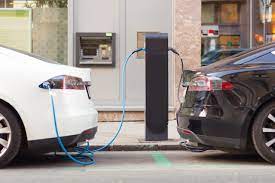Newsletter Nr. 1: 2021 article 3
A Note on Economic Drivers of Mitigating Climate Change
Harold M Hastings and Tai Young-Taft

There is now a general consensus that global warming must be held to a maximum of 1.5º C above the pre-industrial baseline in order to limit severe weather and weather-caused events. [1] As G. Peters et al. noted [2], before reduction of the target temperature increase from 2º C to 1.5 º C, “explosive and policy-driven growth in wind and solar has contributed to the global emissions slowdown but has been less important than economic factors and energy efficiency.” These observations are even more true now.
One economic factor has been realized: a large reduction in the cost of utility-scale solar power [3] has driven an ever-growing installed base. [4] Even though generating projected electric power demands requires ≈5% of the world’s land area, the most desirable land for solar photovoltaic power, such as desert areas, is least desirable for agriculture. Solar photovoltaic power thus avoids the corn for ethanol versus corn for food conflict. However, there are still obstacles at smaller scales. For example, the large upfront cost of electric cars is now an obstacle for many despite the fact that electric cars offer a lower lifetime cost. In addition, electric cars are only practical if there is a supporting infrastructure, and, importantly for carbon-reduction, only “green” to the extent that low-carbon electricity is available. Although one might expect infrastructure development to follow demand, electrification in the rapidly growing developing world at small scales will likely need low cost, guaranteed, likely government supported financing for electrification, as is illustrated by car prices. In conclusion, climate change is a global problem whose solution requires multi-scale buy-in and support, including international and national support of critical mitigation efforts in the developing world, both because the developing world has borne much of its impact and because positive externalities of local mitigation will benefit us all.
[1] https://www.ipcc.ch/sr15/download/
[2] “Key indicators to track current progress and future ambition of the Paris Agreement." Nature Climate Change 7 (2017): 118-122, https://www.nature.com/articles/nclimate3202
[3] See https://www.irena.org/Statistics
[4] See charts in https://www.irena.org/Statistics
Harold M Hastings teaches in the Division of Science, Mathematics and Computing at Bard College at Simon’s Rock (Great Barrington, MA, USA), following retirement as Professor Emeritus of Physics at Hofstra University (Hempstead, NY, USA).
Tai Young-Taft teaches Economics at Bard College at Simon’s Rock and is a member of the Levy Economics Institute of Bard College (Annandale-on-Hudson, NY, USA).
Drs Hastings and Young-Taft collaborate extensively in the dynamics of complex economic systems, combining Dr. Young-Taft’s experience in economics and Dr. Hastings’s experience in the dynamics of complex systems.
Back to Meridian 1

